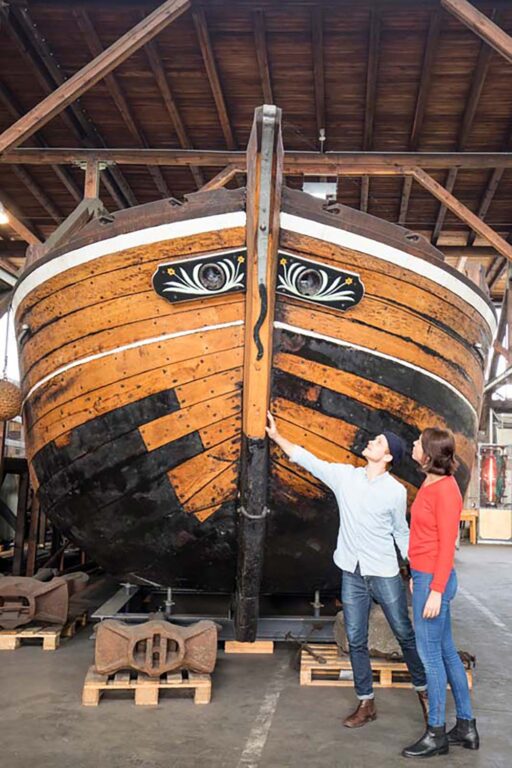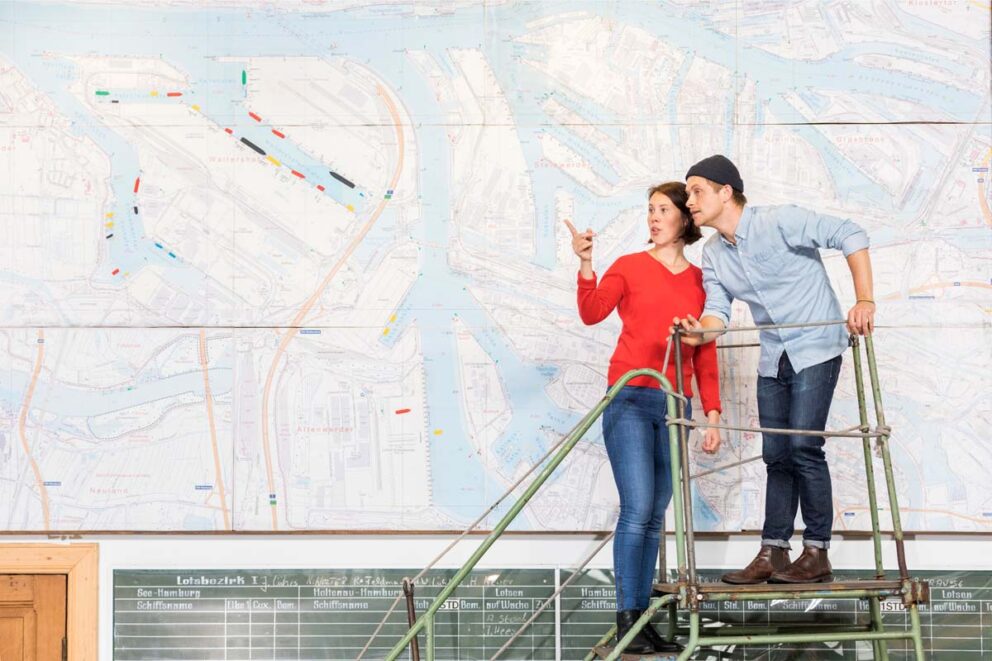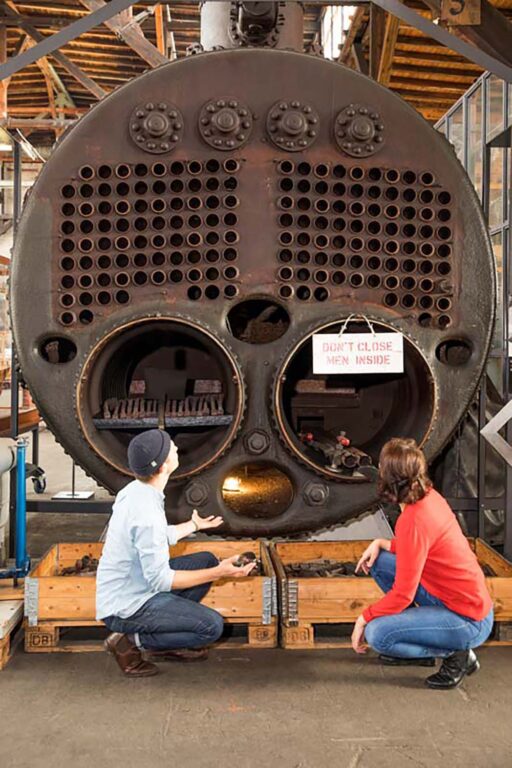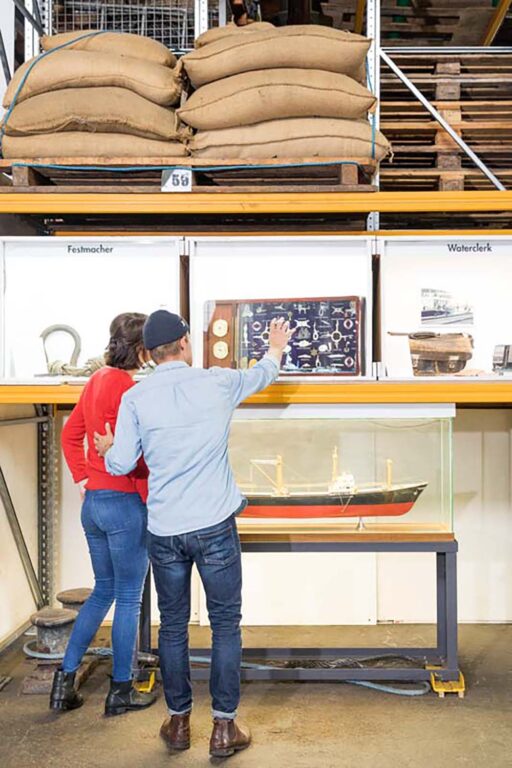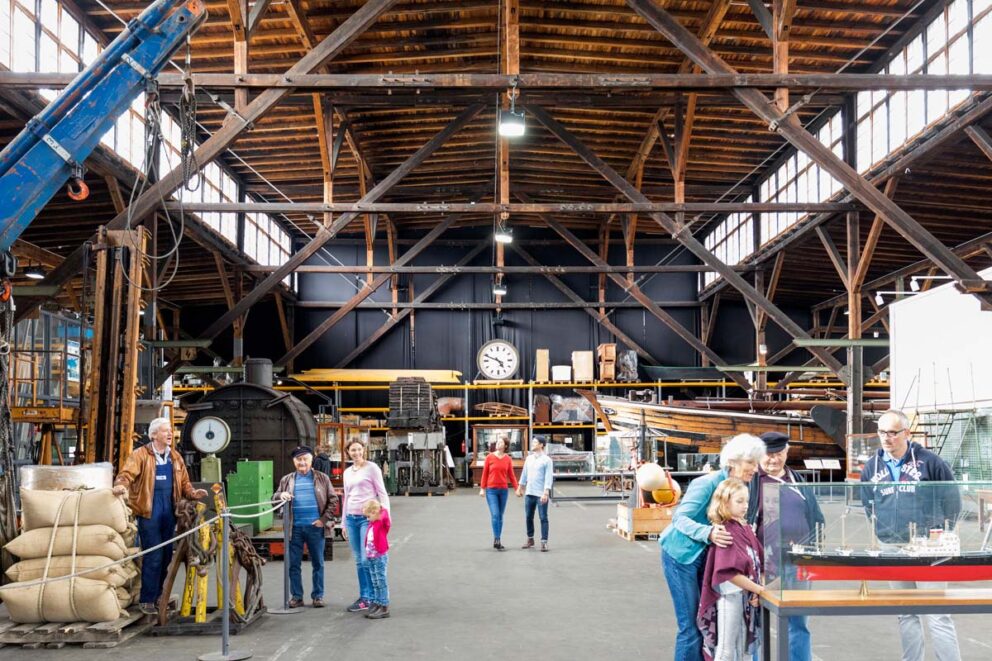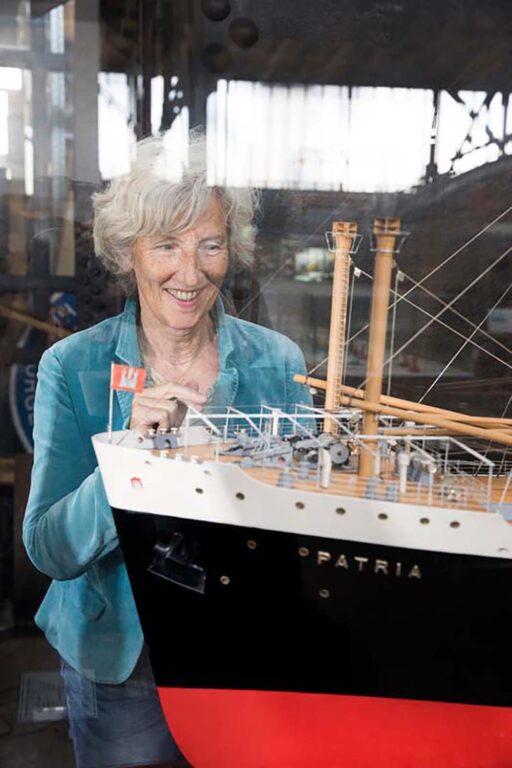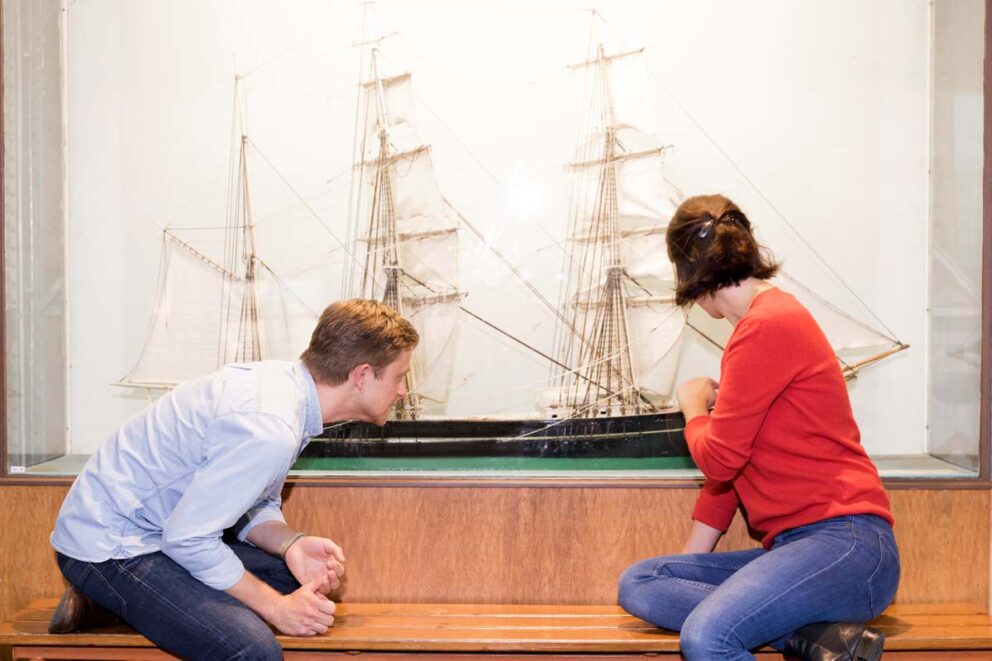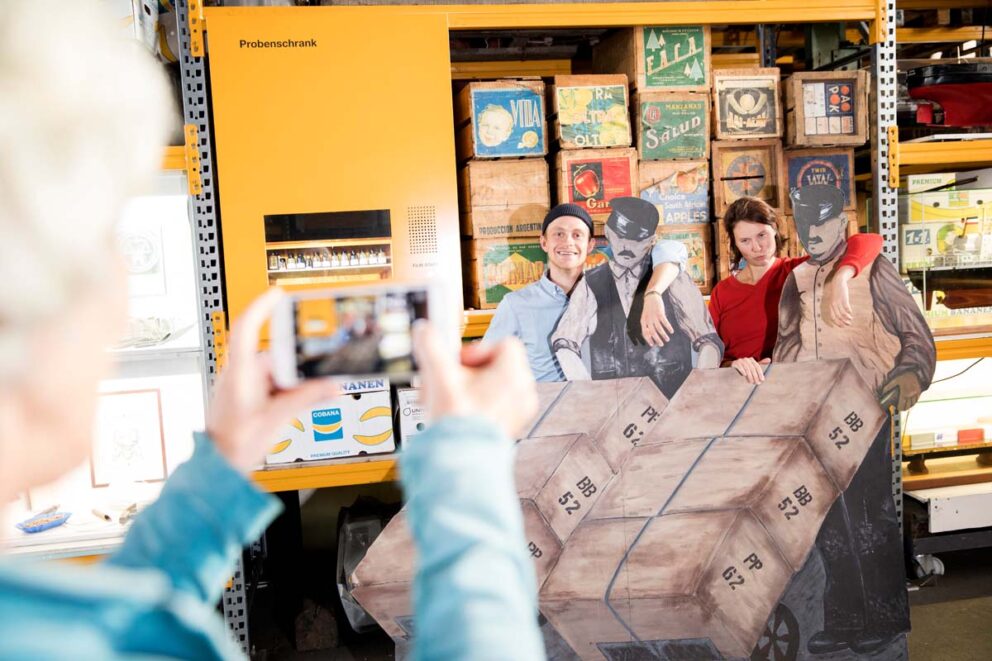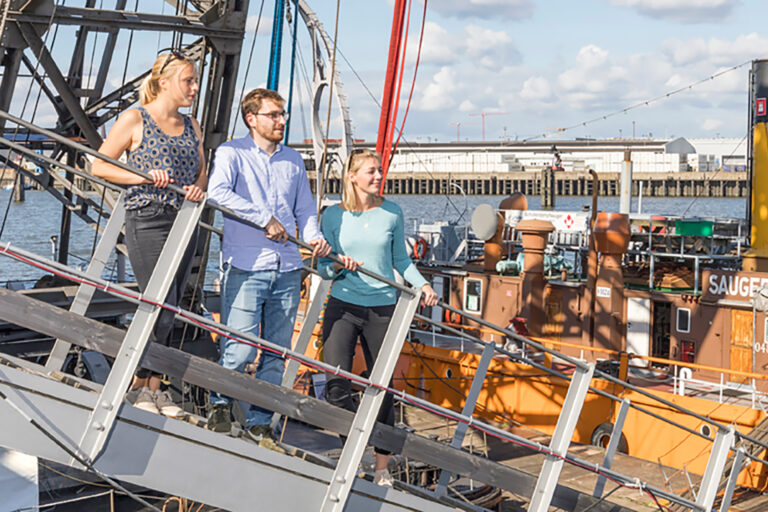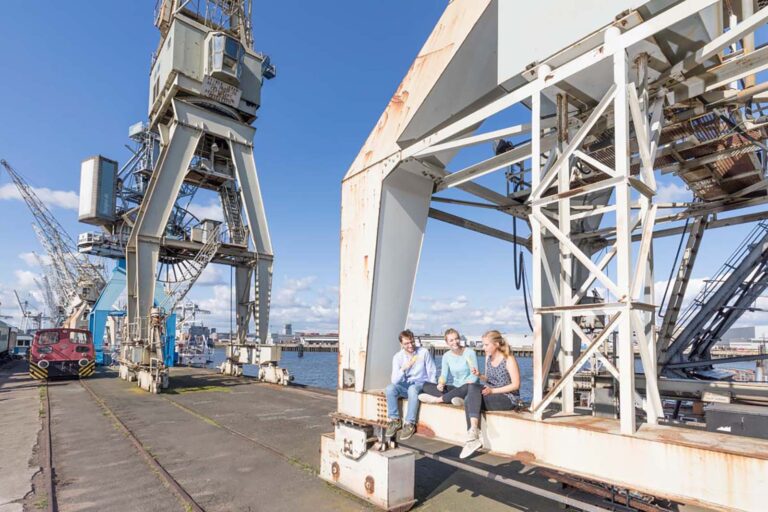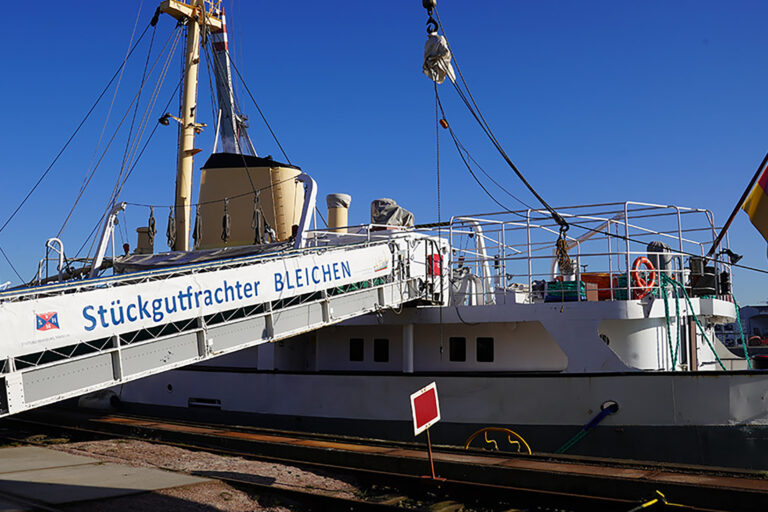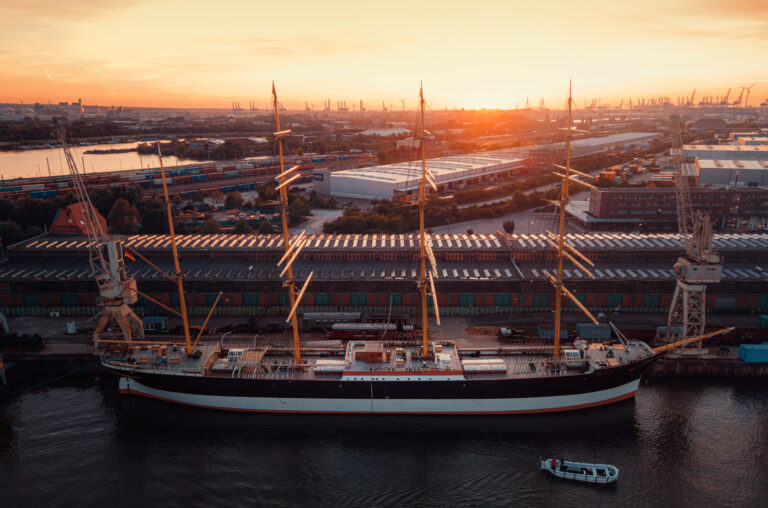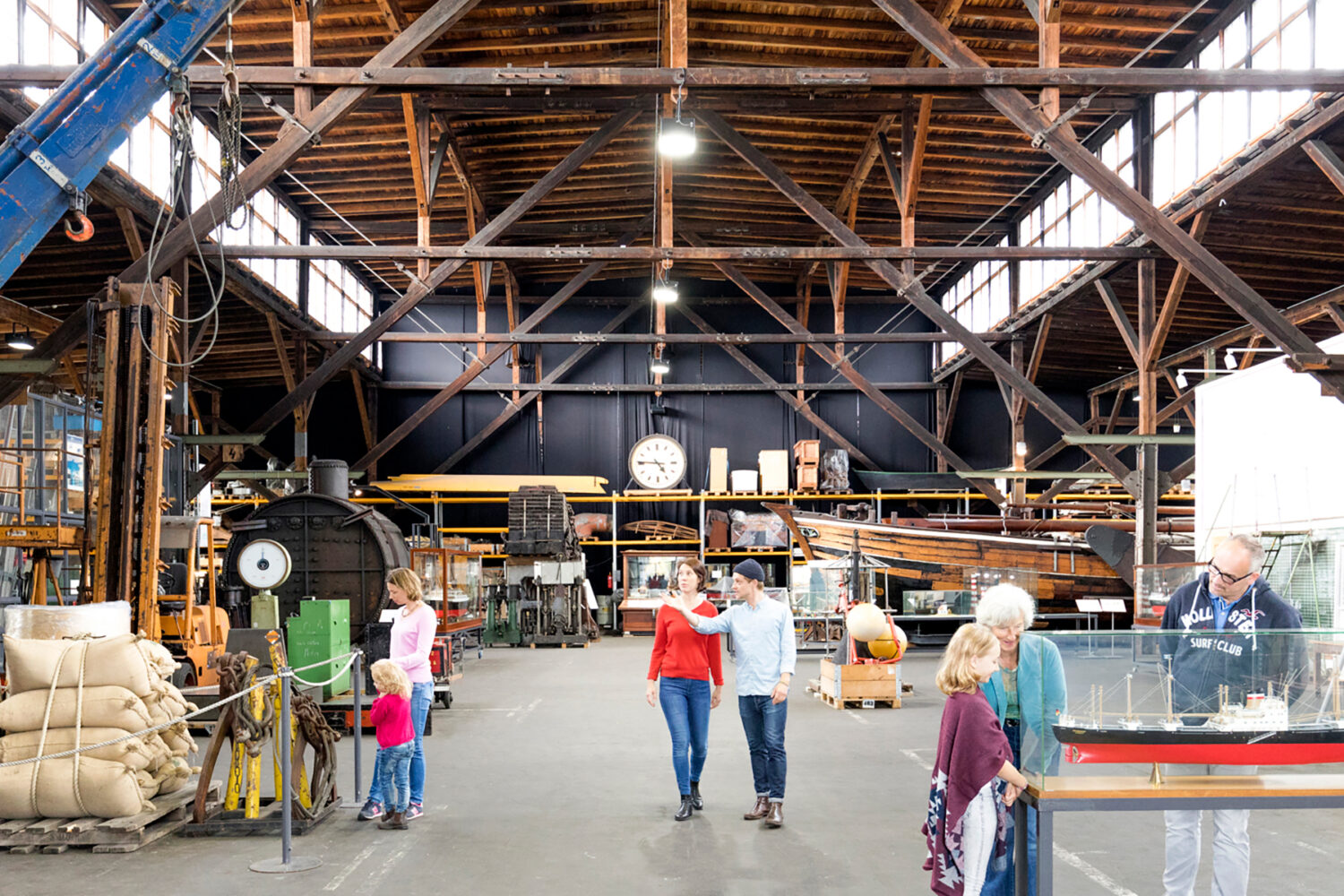
About 1900, the increasing transhipment and the ships becoming bigger required an extensive rebuilding and extension process of the Port of Hamburg. From 1908 until 1909, the sheds 50 and 51 were built along the wall of the Bremen quay. Each of them was 271 metres long and 48 metres deep. Furthermore, a dwelling house for the quay officials was built in 1911. More or less at the same time, the sheds 52 and 53 were built at the Australia quay along the India port.
The appeal of the shed 50 A as of the others lies in the lightweight wooden construction in the style of a hall church with nave and two aisles. In comparison, this way of building was not only cheap; it also meant the quick rebuilding in case of a fire. By raising the central nave, an adequate incident of light was made possible. The sheds were stocked with electric half-dockside cranes to the dock side. The quay and loading ramps were connected to the railways and opened to horse and cart. All of these factors made an easy and quick handling of goods possible.
At the gable ends of the shed, the constructors added buildings made of bricks housing office space for the quay’s administration, recreation rooms and sanitary facilities for the dockers as well as company flats for the quay officials. Apart from the sheds’ architecture that pointed the way ahead, the fittings in the head buildings were a huge step forward in the development of the social welfare for the dockers.
At the end of the 1960s, the container revolution led to big structural changes in the Port of Hamburg. Huge parts of the old port were torn down. Today, you find on the spit of quay between Hansa port (Bremen quay) and India port (Australia quay) the last preserved ensemble of quay sheds from Imperial Germany. The sheds 50 to 52 as well as the dwelling house for the quay officials are under preservation order since 2002. The shed 53 has been torn down.
Highlights
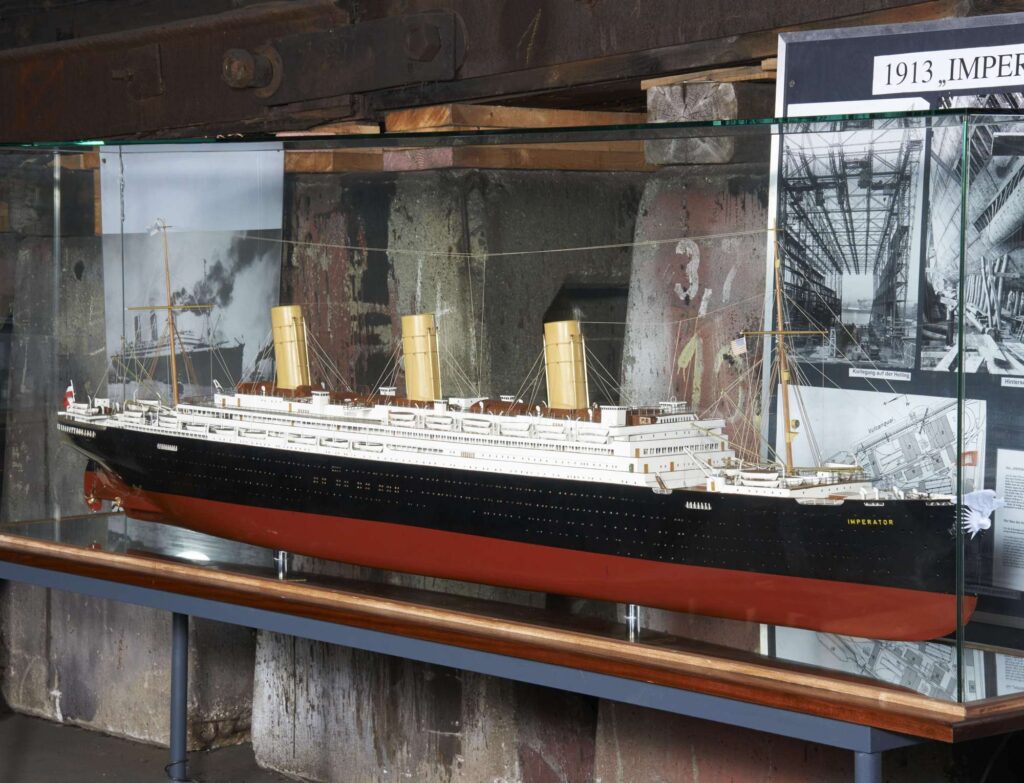
SS Imperator
SS “Imperator” was built in the Vulcan shipyard in Hamburg. The launch was on 23rd May 1912. At 52.117 gross tons, the Imperator was the largest ship in the world. The godfather of the ship was Emperor Wilhelm II.
There were another two ships belonging to the trio: SS Vaterland and SS Bismarck. Being the largest passenger ships built in Hamburg, they belonged to the Hapag shipping company. In order to be able to guarantee a weekly departure from Europe to America, Albert Ballin imposed the building of a fleet of steam-powered express liners. The flagship Imperator was built at the Vulcan shipyard, the two sister ships, Vaterland and Bismarck, were built at the Blohm & Voss shipyard. Each ship was larger than the predecessor model. These ships were also in response to the building of the Olympic class by the White Star Line that had begun just before. The RMS Titanic belonged to that class, too.
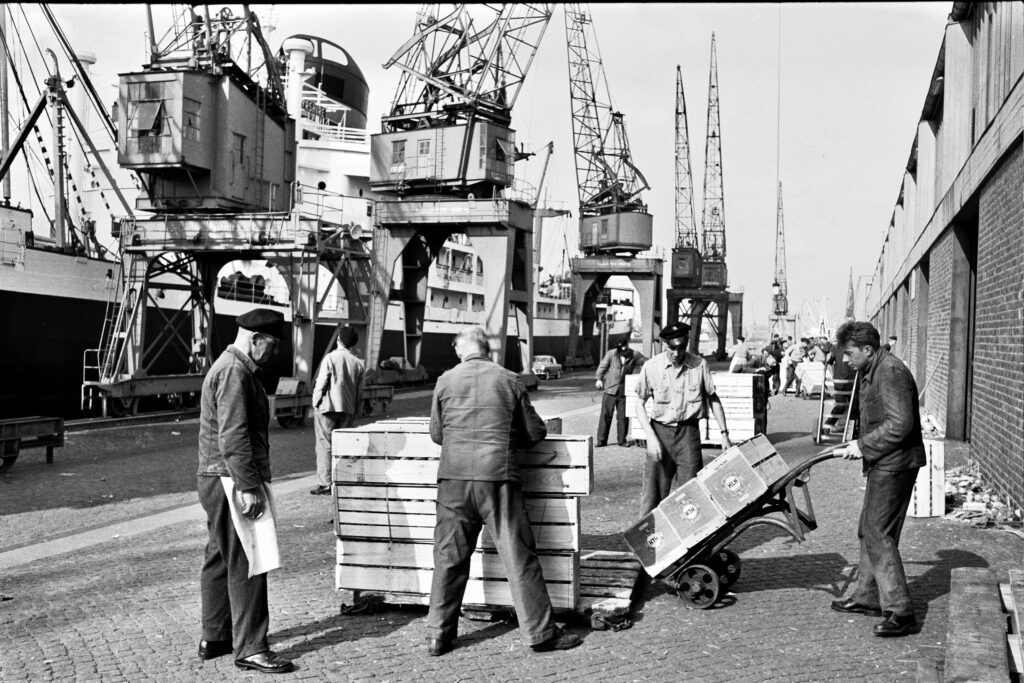
Handcarts
For a long time, the handcart was the established, cheap and universal mean of transport for the work in the sheds, storehouses and on the ramps. Using a handcart, the dockers could pick up the individually packaged goods from the ships and carry them over long distances to the quays and sheds. It was even invented a special handcart for the transportation of barrels. Since about 1900, battery-powered vehicles, electric carts and mobile cranes in the sheds facilitate the work of the dockers.
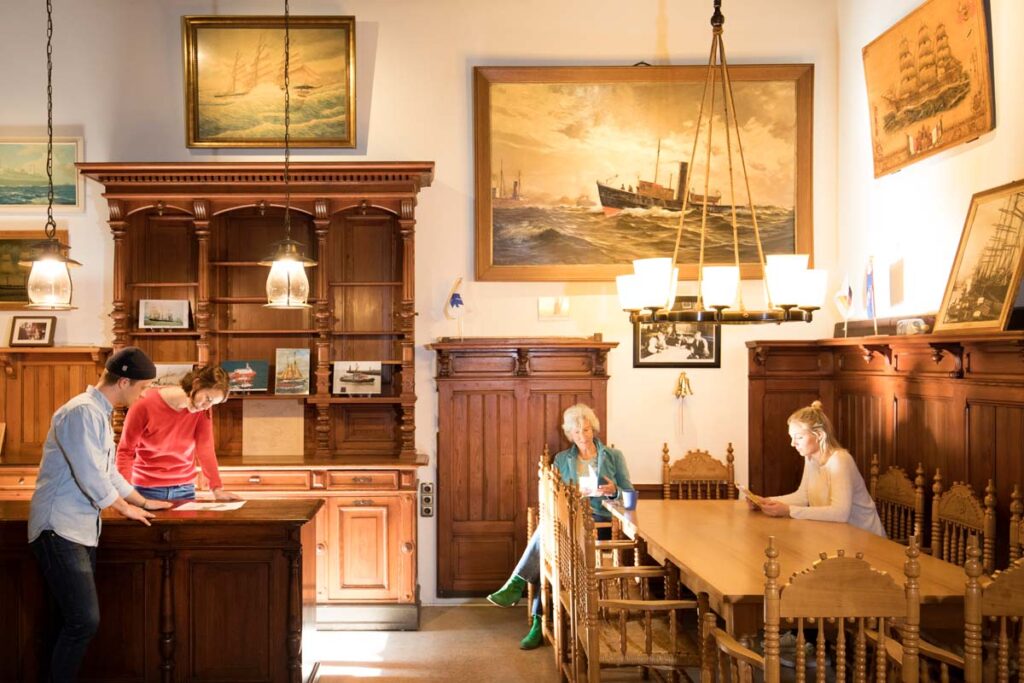
The pilots’ parlour
Causally related to the building of the Kiel Canal, the pilots’ parlour was built in 1895 in Brunsbüttel nearby the Old Locks at the harbour entrance. In 2007, the pilots’ old building was replaced with a new one having adequate equipment for today’s requirements. The pilots’ guild “Elbe” donated the old pilots’ parlour with its historical wooden panelling, old furniture, further equipment and paintings to Hafenmuseum Hamburg that rescued it and presents it since 2012 in the show depot. At the time before radar, GPS, AIS, cell phones and cars were invented, the pilots’ parlours were important waiting stations for the pilots. There, they spent their waiting time before taking care of the ships being obliged to be piloted according to the “Börtordnung”. So, the pilots’ building was like a big hotel whereas the pilots’ parlour was waiting and recreation room, information exchange and an important place for professional exchange.
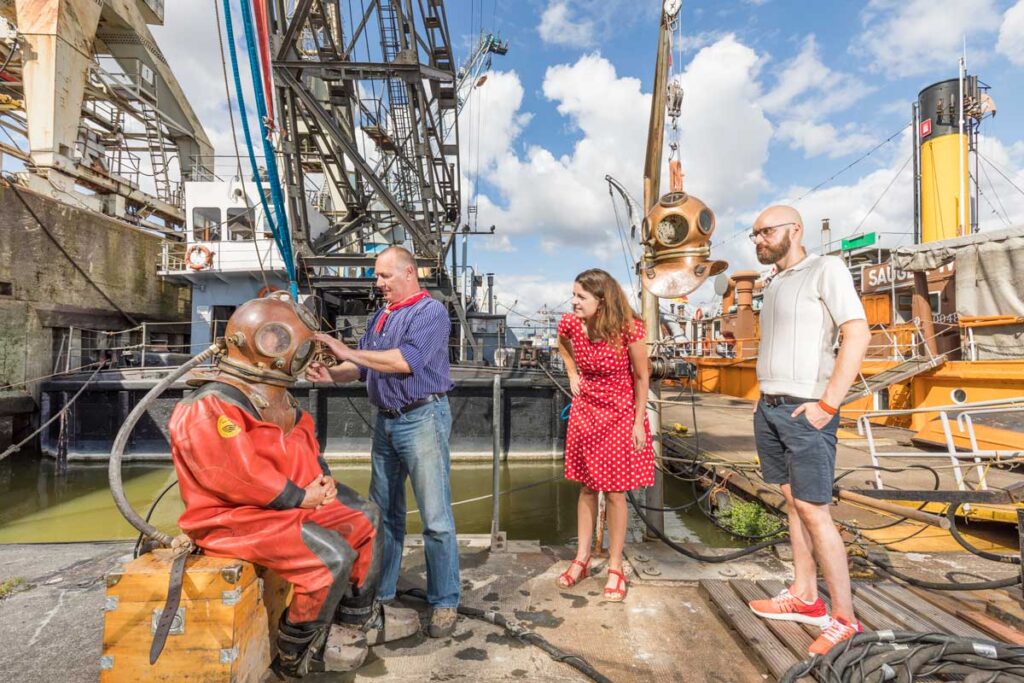
The pressurized cabin for divers
The pressurized cabin served the controlled decomposition of enriched nitrogen in the diver’s blood after long and deep dives. By phased reducing of over-pressure in the pressurized cabin, up to 5 bars at most, a process of slowly sinking over-pressure is simulated for the diver who exhales slowly the nitrogen in his blood without physical damage. The pressurized cabin was used at the beginning place of the dive or on ship.


